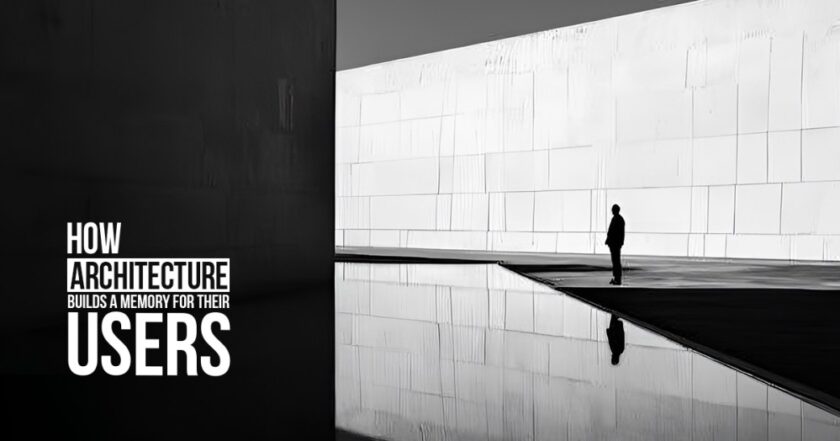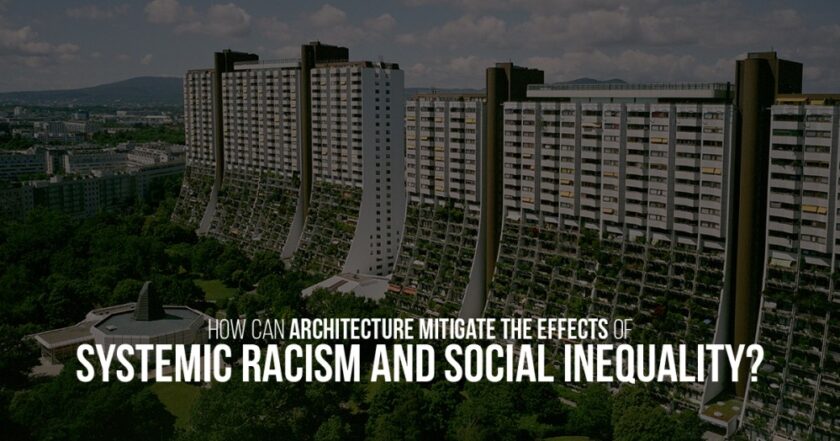Architecture is about storytelling and the keeper of our memories, more than just a building. A space transforms into a place when it is tied to the experiences and emotions of its users. These places carry our stories, spark nostalgia, and influence how we see the world. Architecture creates a deep connection between people and the spaces they inhabit by engaging their senses, reflecting cultural values, and adapting to personal narratives. This connection turns buildings into living memories, showing how architecture shapes both environments and the emotions held within them.

The spaces evoke emotions that become deeply ingrained in memory. For example, the glory of the Taj Mahal leaves visitors in awe, not just because of its symmetry and white marble but also because of its tale of eternal love with cherished memories. The Taj Mahal, which was built by Emperor Shah Jahan in memory of his beloved wife, Mumtaz Mahal, stands as a timeless testament to their love and devotion. This combination of magnificent architecture and the epic story of love and grief is what makes the Taj Mahal unforgettable, it evokes and deepens the memories tied to the place.

Spatial Narratives and User Experience
Architectural design often guides users through a space, creating a sense of journey or discovery. The thoughtful spatial arrangements leave lasting impressions, as users recall the place along with the experience of moving through it.
The Guggenheim Museum in New York, designed by Frank Lloyd Wright, leads visitors on a spiraling path through its galleries. They experience a progression of exhibits, where the interplay of light, space, and movement transforms the viewing of art into a memorable experience.

Another example is the Meenakshi Temple in Madurai, India, where continuous pathways, towering gopurams, and detailed carvings immerse visitors in a spiritual journey.

Sensory Engagement
Architecture engages multiple senses simultaneously, creating an immersive experience printed into our memory.
Visual Impact:
The golden hues of the Sydney Opera House at sunset create a striking image, symbolizing innovation and the cultural heartbeat of Australia. Its sculptural form, inspired by nature to form shells, captivates the eye, while its dramatic setting against the harbor elevates the visual experience.

Touchscape and Soundscape:
The Jewish Museum Berlin’s “Shalekhet” (Fallen Leaves) installation, designed by Menashe Kadishman, invites an instinctive tactile experience. The walk-over metal faces scattered across the floor produce a haunting clanging sound, while the uneven, harsh texture under the foot evokes discomfort and unease. This interaction creates a physical and emotional connection to the memory of those lost, making the experience deeply impactful.

The smell of nostalgia:
In an interview, while asking about his childhood house, Finnish architect Juhani Pallasmaa said that, more than sight, his memories are based on the smell of the house. According to him, each house has its smell, which we do not always perceive when we are in it, but immediately recognize upon returning. Similarly, the earthy scent of old wood in a heritage library can transport users back to a specific chapter of the book or the moment or reflection.

Social and Cultural Context
Architecture becomes a holder for memories tied to social or cultural events. The communal spaces, such as plazas, parks, and courtyards, become stages for shared memories among users.
The Kathmandu Durbar Square is an architectural marvel as well as a cultural hub where festivals like Indra Jatra create shared memories for thousands of people. The visitors don’t just remember the space but also the events that took place there.

Similarly, a traditional Nepali neighborhood might hold the memory of a vibrant wedding. The intricate wood carvings and smell of clay, the aroma of food wafting through the air, the sound of Panche-Baja, and the laughter of family and friends create a rich tapestry of social and cultural significance.

Iconic Landmarks and Collective Memory
Certain architectural works transcend personal experience and become part of collective memory, more than just an existing physical structure and landmark.
The Eiffel Tower symbolizes Paris and romance, creating shared memories for millions of visitors who take in its views or propose to loved ones there.

Similarly, Chandragiri Temple in Kathmandu evokes memories of spiritual reflection, morning prayers, or simply enjoying the view of the valley and beautiful Himalayan Range from its hilltop.

Time, Context, and Changes
Architectural spaces grow with their users, accumulating layers of memories.
Evolution of memories over time
A repurposed space, like a former industrial warehouse, converted into an art gallery, holds the memory of its past function while creating new experiences for contemporary visitors.
The Tate Modern in London, originally built in 1947 as the Bankside Power Station, is a powerful example. The design respects the site’s industrial past while giving it a new cultural purpose, making it a bridge of past and present memories. The visitors walking through the gallery experience the juxtaposition of the building’s original raw materials: brick walls, steel structures, and open spaces, with the modernity of the art it houses.

Seasonal Transformations
Seasonal transformations change the physical appearance of a building as well as its interaction with users, shaping dynamic experiences and memories throughout the year. A vibrant commercial street with bustling shops and cafe fronts, for example, thrives in the summer with outdoor seating, open stores, and lively pedestrian activity. In contrast, during snowy winters, the same space might become quieter, with users seeking warmth inside and the snow-covered facade creating a serene and cozy ambiance.

Aging Materials
The weathering of wood, stone, metal, or any other building materials, adds character and evokes the passage of time, enriching memories.
For example, the weathered stone facade of the Colosseum, marked by centuries of exposure to the elements, showcases the enduring beauty of timeworn architecture. The patina and imperfections tell the story of its ancient past and evoke a sense of awe and connection to the memories of the Roman Empire, creating a deeper, more meaningful experience for visitors.

Personalization and Identity
Architecture becomes more meaningful when users can personalize or adapt a space. A family home can be a perfect example. The memories of carefree play in the backyard, festive celebrations in the living room, or quiet afternoons under a favorite tree, childhood bedroom with its playful wall colors, and cozy bed space with hanging lights, connect with the physical design of the house and the familiar layout of the neighborhood with time. Moreover, the addition of personal items over the years like photographs, furniture, and plants make the space uniquely theirs.

Architecture shapes the way people connect with spaces, embedding itself in the stories and emotions of those who experience it. Architects create environments that go beyond utility and leave lasting impressions, by engaging the senses, honoring history, fostering interaction, and embracing timeless principles. From small bedroom spaces to iconic landmarks, these spaces become the vessels of memory. They intertwine with the lives and experiences of their users to make architecture not just functional but truly unforgettable. Hence, it is always the responsibility of an architect to craft a design that will capture the user’s attention so that they can capture it in their memories forever.
References:
Kaarwan blogs. (2024). A Symphony in Stone: Unveiling the Timeless Design and Architecture of the Taj Mahal. [online]. Available at: [Accessed 26 November 2024].
The Guggenheim Museums and Foundation. (2024 The Guggenheim Museum on the Inside. [online]. Available at: [Accessed 25 November 2024].
ArchDaily. (2023). Architecture and Memory: The Sense of Smell and Recollection. Available at: [Accessed 25 November 2024].
Fotoeins Fotografie. (2024). My Berlin: Shalekhet (Fallen Leaves), Jewish Museum. [online]. Available at: [Accessed 27 November 2024].
The Plan. (2023). Preserving and Transforming: Architecture as Memory – Nieto Sobejano Arquitectos. [online]. Available at: [Accessed 26 November 2024].
ArchDaily. (2013). AD Classics: The Tate Modern / Herzog & de Meuron. [online]. Available at: [Accessed 25 November 2024].


As an architecture and interior designer, I am passionate about creating spaces that inspire and delight those who inhabit them. With over a decade of experience in the industry, I have honed my skills in both the technical aspects of design and the art of crafting beautiful, functional spaces.
After earning my degree in architecture, I began my career working for a prestigious firm where I was exposed to a wide range of projects, from commercial buildings to high-end residential properties. During this time, I developed a keen eye for detail and a deep appreciation for the importance of form and function in design.
In recent years, I have struck out on my own, founding my own design studio where I have been able to further explore my passion for interior design. I believe that a well-designed space can transform the way people live and work, and I take pride in working closely with clients to understand their needs and create spaces that exceed their expectations.
Throughout my career, I have been recognized for my innovative and creative approach to design, and have been honored with a number of awards and accolades. When I’m not working on design projects, you can find me exploring the outdoors or seeking inspiration in the world around me.



